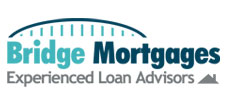| |
There are times when people find themselves unable to pay bills on consumption expenditure or certain outstanding debts like education loans etc. or they want finance for remodeling their home or purchasing a second residential property. It is during this time that they look for alternative sources of credits. Among the numerous alternatives in hand during the time of need, one option that has gained increasing attention is home equity loans. Home equity loan have been gradually accepted as a source of funding because they provide large amount of cash at lower rates of interests and also provide tax advantages. The proportion of homeowners with home equity loans was only 5 percent in 1977 however, with the Tax Reforms Act of 1986 they have increased to 13 percent in 1997(Federal Reserve Bulletin, 1998).
However, these kind of loans have an associated risk i.e. the risk that consumer’s home has to be kept as a collateral. Therefore, the consumers are often faced with a very delicate situation. One way to make a very well informed decision while taking up this kind of loans is by assessing and weighing the risks and vulnerabilities associated against the returns. In this short excerpt, we try to help the consumers in making a well-read decision. In brief, we discuss the types of home equity lendings available namely, fixed rate second mortgages and home equity credit lines, and try to highlight the relative advantages and risks associated with these modes of credit available in the market that can be used as an alternative for repayment of debts or bills.
The first question that seeks answer is who are eligible for a home equity loan? Home equity loans are available for people who own a home or are aspiring to own a home. Almost all the aspiring families who decide to own a residential property take up a mortgage that is paid off in a decided number of years which is most often in a fifteen or thirty years period. It is only when the buyer or the mortgagor fully repays the mortgage that he is the sole owner of the property. However, during this period of fifteen or thirty years whatever amount the mortgagor pays on the property builds up as the equity in the home. Therefore, in a layman’s term home equity can be defined as the amount of ownership that has been built up by the buyer overtime, by repayment of mortgage and the appreciation of the value of the home. During the time of need the homeowners can use this home equity as spendable funds by converting them into home equity credit. The home equity credits are available to homeowners basically in two forms, namely, traditional home equity loan or second mortgage payment and home equity line of credit.
Traditional home equity loan are often defined as closed-end loans available for a specific length of time. The interests and principal of the loan are repaid in equal monthly installments. Interest rates on these types of loans are generally fixed for the loan period. On the other hand, the home equity line of credit provides more flexible terms of use. It permits borrowing from time to time as is required up to the amount of the credit line. The repayment schedule is also flexible and the interest rates vary according to the index rate such as the prime rate.
Statistics (Federal Reserve Bulletin, 1998) show that the traditional home equity loan or second mortgage payment types of home equity credit were preferred before 1980s. However after the tax reforms in 1986 the home equity line of credit gained popularity. The traditional loans, which were 5 percent of the total home equity credit during 1988, remained the same, where as the home equity line of credit increased from 6 percent during 1988 to 8 percent in 1997. Both the types of home equity credit provide relatively attractive interest rates and tax advantages and when compared separately, they have their own advantages. The second mortgage payments are considered to be safe because the interest rate on repayment is most often fixed and many a times they are repaid in fixed amounts. Also, the loans are available in lump sum amounts, which can be used by the consumers for a very constructive purpose.
On the other hand, the characteristic feature of home equity line of credit that makes it lucrative is that it provides money to the consumers as required. Due to this feature also the credit lines can also be used for different purposes as needed. Therefore, while making a decision on which type of home equity credit one should take up it is very essential to be aware of the ways in which it is to be put into use and whether the homeowner has the capability to make the required payments by the stipulated time. So the primary challenge that a homeowner faces while taking up a home equity credit is compare the various options available based on the type of interest they offer, types of fees associated with them and examining whether they have any kind of balloon payments. After carefully assessing and evaluating the consumer can decide which line of credit is suitable and best tailor made according to his/her needs.
Shreeya Pattanaik is an experienced free-lance writer with a Masters of Arts degree in Economics. You can read more mortgage related loan articles online at MyLoanQuote.com and the Mortgage Loan Outlet.
G.B. Canner, T. A. Durkin, and C. A. Luckett, “Recent Developments in Home Equity Lending” Federal Reserve Bulletin, April 1998, pp. 241-251. |
|

